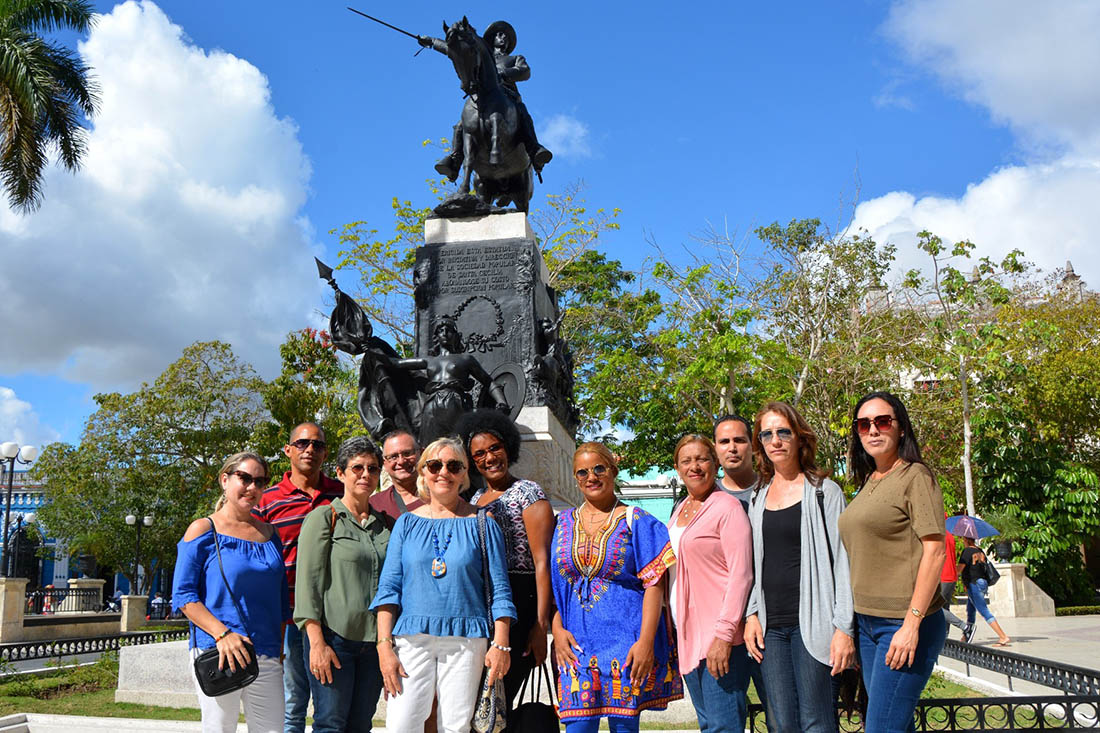By: Mailet Padilla Paneca and Alejandro García Gutiérrez
Perhaps there are no proper names for those people from our lands who, based on functional relationships and responding more to survival needs than a determined planning, marked the first architectural guidelines in the nascent Santa María del Puerto del Príncipe.
Those who do have their own names are the ones that today, after more than half a millennium of technological advances, new construction and design techniques, work to protect the architectural codes of the first generations of inhabitants of this land, today part of it, distinguished as Cultural Heritage of Humanity; a condition that carries great responsibility.
The architects are the ones who plan and design the different buildings and urban landscapes, on them falls the responsibility of finding solutions to social needs, creating new spaces in harmony with the environment, respecting current laws, or safeguarding the physical legacy of our predecessors; without giving up scientific advances and new ways of doing and interacting with the city.
Some, from this profession, dedicate their talent to protect our heritage, understanding that this is not only included in the style of buildings but in their entire environment. Conservation and restoration work is not possible without the participation of architects and a lot of study and dedication is required to do this work; being only possible after scrutinizing the history of buildings or public spaces, so that the proposals are respectful of that past.
The Office and its professionals
This is the case of two work teams where architects from the Office of the Historian of Camaguey city work: the Projects team and the Master Plan and Management team. They, from different perspectives, assume the task of managing, providing technical solutions and planning restoration actions, changes of use, conservation or rehabilitation of buildings and public spaces in the Historic Center of our city. Architects dedicated to urban planning study and propose ways of managing cities, their development prospects, their opportunities, and suggest management models that guarantee the sustainability of heritage assets.
Exalting a task
There are many examples of good deeds in this regard, such as the interventions in the Joaquín de Agüero, San Juan de Dios, Trabajadores squares, the Agramonte and Martí parks, the Maceo and Ignacio Agramonte streets, just to mention some examples of finished works, but we can also include projects such as the Railway Museum and Independence Street, the first of which is in the execution phase.
The work of the architects of the Office of the Historian has also contributed to achieving such important recognitions as those granted in 2011 to the House of Cultural Diversity building in Camaguey; among them the National Restoration Prize and the collateral prizes in that same contest, conferred by the Union of Architects and Construction Engineers of Cuba (UNAICC, by its acronym in Spanish) and the Cuban branch of the International Council on Monuments and Sites (ICOMOS).
In that same year, the UNAICC Architecture Society awarded it the Gold Medal at the VIII Hall of Architecture, for being the work of the highest comprehensive quality presented at the event. Among many other awards, we can also mention the National Restoration Prize conferred on Batey Jaronú in 2018 and the Gubbio Prize, granted by the national association of artistic historical centers of Italy, to the Management Model of the Office of the Historian of Camagüey city.
Heritage Premium Architects
The architect’s work is vital for the enhancement of heritage and the rescue of historical memory, through its tangible expression. Many of these professionals, graduated from the University of Camagüey, are just beginning their working lives; others, with more experience, are true referents when speaking of architecture and heritage.
Behind these images of a 507-year-old heritage city, with its contrasts and wonders, the architects appear, holding as an Atlas, the broken plate of the Camagüey map.
Translated by: Aileen Álvarez García








